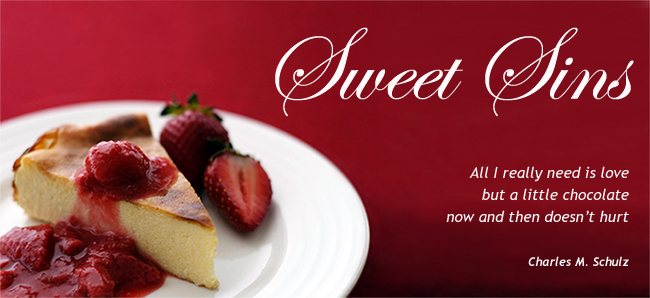
I'm really not good in decision making. Since a couple of months, there is a book voucher lying around in my drawer. 80 bucks that just wait for me to go into the shop and get some nice books in exchange. Alas, before I go there, I have to make up my mind WHICH books I'd like to have. Since I got this voucher, I started a list with desirable cook books - mostly recommendations of other food bloggers. As the months go by, the list gets longer and longer... Not really a great help, isn't it?
I've almost settled on "Amy's Bread" (eventually, I had to give this fabulous book back to the library) but I picked up another very nice and useful bread baking book: Bread Machine Kitchen Handbook. This book features more than 150 bread recipes using an electric bread maker - not necessarily for baking but always for mixing the dough. Having recently neglected my bread maker a little bit, this book offers a lot of possibilities. It's also very comprehensive: It includes sourdough and other starters as well as specialty grains, sweet breads, and all sorts of buns and pastries. As I won't be able to try more than 150 recipes - even if I renew my library loan three times - shouldn't I get this book, too? However, with those two books in my mind, the voucher is more or less spent entirely - and isn't two bread baking books a bit too much? After all, I'm also longing for a good dessert book - but should I go for Emilie Luchetti, Dorie Greenspan, Alice Medrich, Claudia Fleming, or David Lebovitz? You see, it will still take some time to decide on my final purchase.
Meanwhile, I'd like to show you a new bread that I've made following a recipe from the Bread Machine Kitchen Handbook. I had never tried a poolish before but it was dead simple and produced an excellent result. Honestly, taste wise I wouldn't have noticed that this "Pain de Campagne" didn't use "real" sourdough but the quicker french/polish version for leavening. Very hearty taste, beautiful big holes in the crumb and a nicely browned crisp crust - I almost thought that I could settle on this recipe for my everyday bread if it weren't for the other 149 recipe that are yet to be explored...
Pain de Campagne
The ingredients
Poolish
200ml water
175g white bread flour
50g wholemeal bread flour
1/4 tsp dry instant yeast
Dough
120ml water
225g white bread flour
50g wholemeal bread flour
25g rye flour
1 1/2 tsp salt
1/2 tsp sugar
1/2 tsp dry instant yeast
1
For the poolish, pour the water into the pan of your bread maker (be sure to have the kneading blade inserted), top with flours, make a small dent, and add the yeast (if your bread maker's instructions call for another order of adding the ingredients, do so).
2
Choose the dough setting and press start. When the dough cycle has finished, leave the poolish inside for fermentation with the lid closed. Depending how sour you like your bread, leave it there for 2-8 hours. I left it in for the full 8 hours period which resulted in a pronounced and hearty taste but the bread was not really sour (which wasn't bad in my opinion).
3
Add the ingredients for the dough to the poolish in the bread pan, starting with wet and ending with dry ingredients (unless otherwise stated). Choose the dough setting and press start.
4
When the dough cycle has finished, remove the dough from the bread pan and place on a lightly floured surface. Knock it back gently to degaze and shape it into a round ball.
5
Place the dough on a baking sheet or piece of greaseproof paper, cover with oiled cling film if desired and leave to rise for 30-45 minutes or until almost doubled in bulk (I didn't wait quite that long). Meanwhile, preheat the oven to 220 degrees Celsius (200 degrees Celsius if fan-bake).
6
Dust the loaf with flour and slash with a sharp knife (a razor blade is best) three times in a criss-cross pattern (I slashed it only three times in one direction). Bake the loaf for about 40 minutes or until golden brown. To get a crisp crust, pour a cup of water onto the bottom of the oven during the first five minutes to create steam.
The source
Jennie Shapter: Bread Machine Kitchen Handbook. Making the most of your bread machine's potential, including more then 150 step-by-step recipes.


5 comments:
Sieht ausgesprochen lecker aus! Das Buch muss ich mir auch mal anschauen ;-)
Wow, you try so many different types of bread! I'm only just starting baking with yeast (and I'm still using a breadmaker >_<). I can't wait till I can try so many different kinds.
Rebecca - I gladly use my breadmaker for the kneading, otherwise we would go without any bread sometimes... Although I still love to make pastry, bread baking is unbelievably exciting - you're always in for a surprise and getting consistent results isn't all that easy. Enjoy the adventure!
I see what you mean about the bread that you made recently being different to this picture. The bread you gave me didn't have big holes in the crumb - the texture and density was more even and very, VERY good. I ran out of rye flour but will get some soon to try this. I book marked this to try but forgot all about it till now. I was curious initially about the poolish. Now that I've tasted your bread, I just have to make it.
Nora - I'm baking for quite a while now but many things are still a mystery to me... Will have to make this bread much more often to figure out the factors that determine the look. However, it's tasty and nonetheless dead-easy so give it a go!
Post a Comment